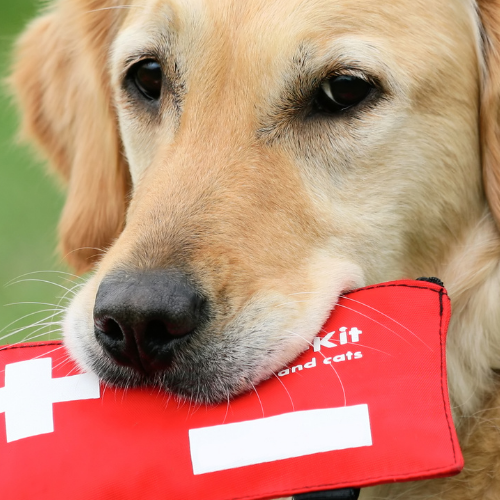
Pet first aid is emergency treatment administered to an injured or sick animal before veterinary care is available. The goal is to ensure any unusual or life-threatening event can be controlled until professional medical care is available. The most important component is humane restraint to ensure that your pet does not harm you or anyone else or cause further harm to itself. A second element is to remain calm.
Pet first aid can range from removing ticks, providing relief from insect bites, soothing infected ears or irritated skin to stopping bleeding from small cuts or torn nails. There are some emergencies, such as being hit by a car, abdominal swelling (bloat) and difficulty urinating (cats), that require immediate veterinary attention, and you should be prepared to ensure your pet’s comfort in transit.
Basic first aid procedures
· To be safe, muzzle your pet.
· In an event of bleeding, press a clean, thick gauze pad or cloth over any wounds, and keep pressure until the blood starts clotting.
· Keep your pet as warm and as quiet as possible.
· Severe inflammation, irritation or discomfort should not be treated at home.
· If there may be broken bones, use a flat surface, such as board, to transport your pet, making sure to secure your pet to the surface with a blanket or towel.
You can find first aid items specific for pets online or at your local pet store. Basic components of a pets’ first aid kit should include:
· Gauze for wrapping open wounds or use as a muzzle
· Non-stick, sterile pads and adhesive tape
· Blanket or large towel as well as a rigid board or stretcher
· Latex gloves
· Cotton swabs or cotton balls
· Antiseptic lotion, powder or spray
· Hand sanitizer or wipes
· Tweezers
· Hydrocortisone cream 3%
· Blunt-tipped scissors or razor for cutting hair and bandages
· Styptic liquid (or a bar of soap) to stop minor bleeding
· Antibiotic ointment
· Rectal thermometer
· Copy of medical records, including vaccinations
· Rubber bulb syringe (or turkey baster) for flushing wounds
The Red Cross (www.redcross.org) offers an online course on the basics of pet first aid from checking vital signs to handling critical emergency situations, including breathing and cardiac emergencies, wounds, bleeding and seizures.
Accidents do happen and situations arise where a rapid response and first aid are important to ease your pet’s discomfort. Just remember to keep your cool and prepare so you can take proper steps to handle any emergency.
Contact: VETFLIX
Phone: 401-859-1579
E-mail: info@vetflix.pet
Add: 26 Gooding Ave, Bristol, RI 02809